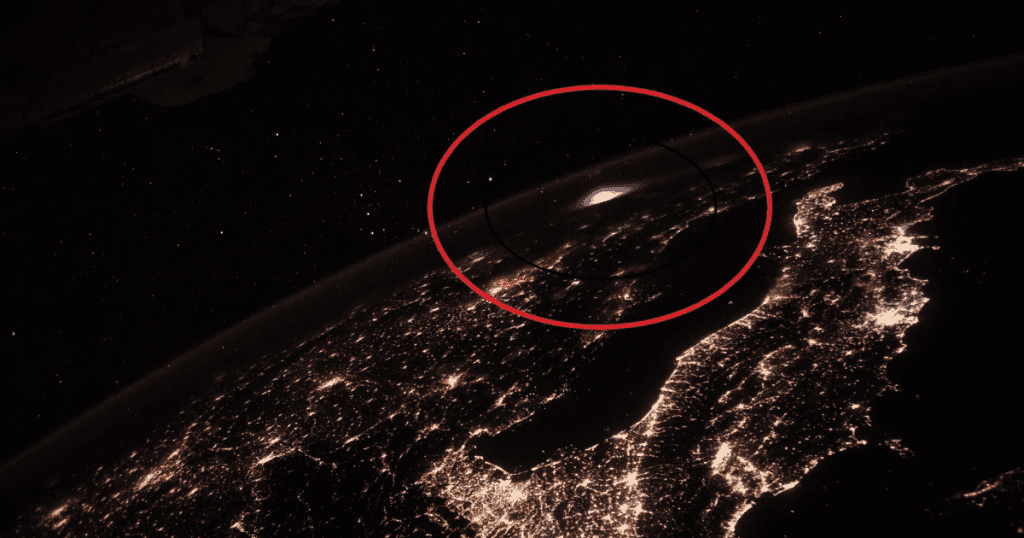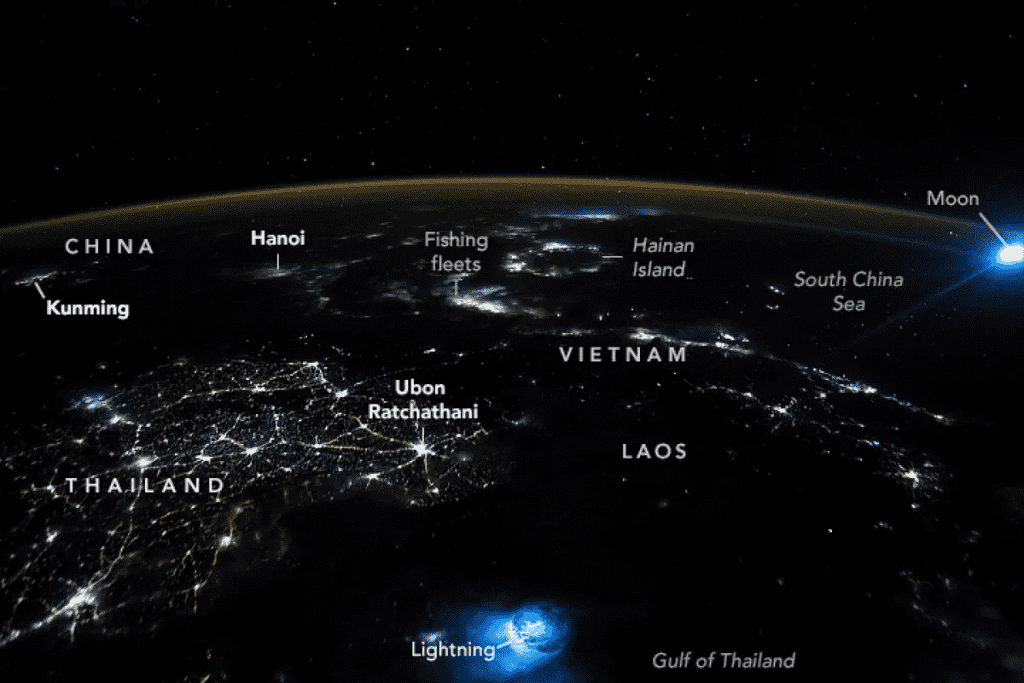An astronaut from the International Space Station (ISS) has revealed images of bright blue lightning that he captured from space using his Nikon D5 camera. It is not a usual sight to encounter these bizarre but distinctive lights from space, and these fascinating images recently released by NASA’s Earth Observatory have caught the attention of many. It’s truly a futuristic and uncanny sight to behold that has intrigued scientists and the general public. Not to mention, the thickening of the clouds has enabled this unnamed astronomer to capture this mesmerizing sight, and that too, at a height of about 254 miles (408km) above the ground.

Coupled with this, it is considered a huge thing to even catch the sight of this undeniably cool lightning but it becomes even more noticeable when astronomers capture the sight in their cameras, and that’s what has been done here. It should be noted that the astronomer captured these images last year on October 30 but NASA make them public recently. Not to mention, all the astronomers that made their way to space have been equipped with special crew equipment consisting of cameras under the supervision of the ISS National Lab program.

But these images are so much better in quality that it made us wonder who was able to capture these from their digital camera exquisitely. As you can see in the pictures embedded above, the whole layer depicts a Southeast Asian region, and the Earth’s limb can be seen in the orange-yellow-colored layer that is parallel to the Earth’s curvature. China, Thailand, Vietnam, Laos, the Gulf of Thailand, and the South China Sea can be seen as the locations that have been captured by the camera.

As you can see at the left bottom, there is a huge ring of bright blue light which has become more prominent as the clouds become thin. This big blob of lightning comes from the vicinity of the Gulf of Thailand and is emerging from all the rings and series of lights in different regions. On the other hand, there is another blob of lightning that happened near the South China Sea, but what exactly it is will make you stunned. It is actually a moon shining from the upper right location and it has been anticipated that it will change its orientation due to the scattering of light.
To that end, both of these lightning blobs are scoping out the landscape of the Earth from space even more, and that too with attention to detail, which is certainly not something that we encounter every day.


